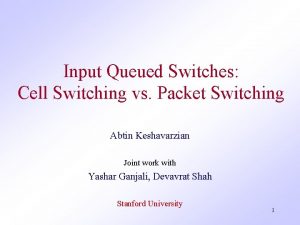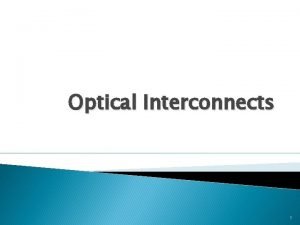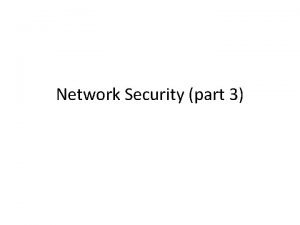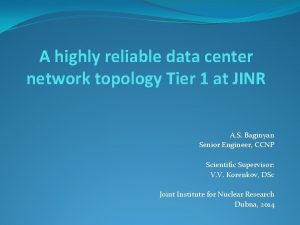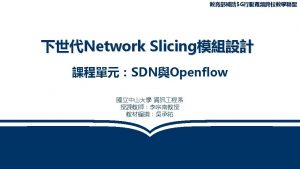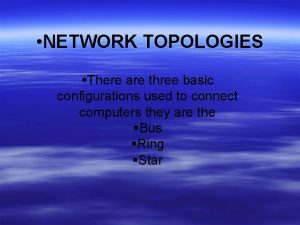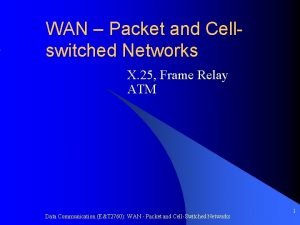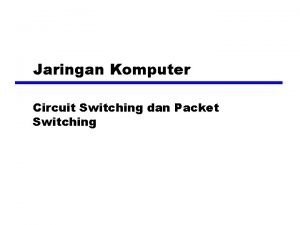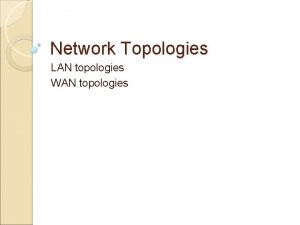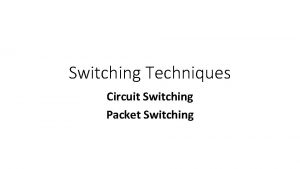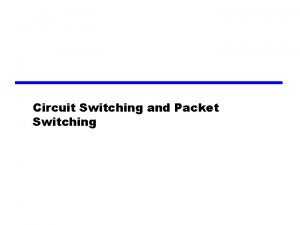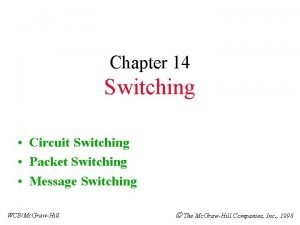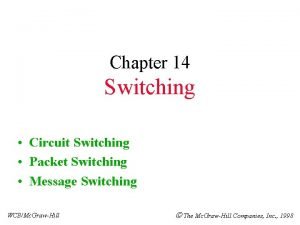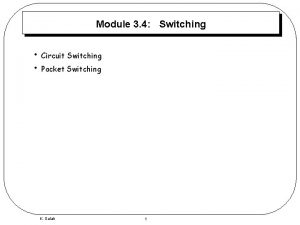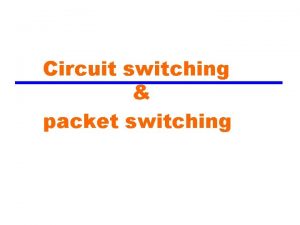Network Topologies Layers and Packet Switching What is

















- Slides: 17

Network Topologies Layers and Packet Switching

What is the Internet

Learning Objectives 1. Explain the terms and role of Packets 2. Understand the concept of Packet Switching 3. Identify Protocols and their role.

Big Picture • Networks transfer and receive a lot of data • In one minute on the Internet: 640 TB data transferred. This lesson considers how such a huge amount of data is sent to ensure that it arrives at the correct computer

Packet switching 1. Imagine that you have a large LEGO model to post through a letter box but, it does not fit. 2. What could you do? 3. What if you could take the model apart and then post it through the letter box and then reassembly it? 4. This is packet switching

Same Idea for a Computer 1. Now image you want to email a photo, first it is broken down into small packets of data 2. Each packet is then given a header which contains the IP address of the network and device that it is being sent to. 3. It also contains the IP address of the network that it was sent from

The Header 1. The header also contains the packet number as well as the total number of packets, for example packet 4 of 60, packet 45 of 60. 2. When the packets arrive at the destination this information is used to reassemble the data. 3. Packets can be lost so sometimes the computer request the packet to be sent again, if a packet never arrives then it is deleted by the router.

An Example Packet

Video Example

ACTIVITY

PROTOCOLS • Network protocols are a set of rules or conventions which control the communication between devices on a network

Do you Know your Protocols? • • TCP/IP HTTPS FTP POP IMAP SMTP

Key PROTOCOLS 1. TCP/IP (Transmission Control Protocol/Internet Protocol) 2. HTTP (Hyper Text Transfer Protocol) 3. HTTPS (Hyper Text Transfer Protocol Secure) 4. FTP (File Transfer Protocol) 5. POP (Post Office Protocol) 6. IMAP (Internet Message Access Protocol) 7. SMTP (Simple Mail Transfer Protocol)

Do you Know your Protocols? • • TCP/IP HTTPS FTP POP IMAP SMTP

Plenary • BBC Online test: http: //www. bbc. co. uk/education/gui des/zp 9 jpv 4/test

Plenary “Share with your table one new thing you have learnt today” Log onto Socrative and complete the Learning questions What have you learnt today? LO

Plenary • Create a short film explain the concept of packet switching or Layers when send and receiving data. • Create a quiz on the lesson content, layers and packet switching
 Message switching and packet switching
Message switching and packet switching Cell switching vs packet switching
Cell switching vs packet switching Cell switching vs packet switching
Cell switching vs packet switching Packet switching vs circuit switching
Packet switching vs circuit switching Cell switching vs packet switching
Cell switching vs packet switching Explain virtual circuit and datagram network
Explain virtual circuit and datagram network Network topologies and protocols
Network topologies and protocols Network topologies and layout
Network topologies and layout Network topologies ppt
Network topologies ppt Network security topologies
Network security topologies Multiprocessor network topologies
Multiprocessor network topologies Data center network topologies
Data center network topologies Three dumb routers
Three dumb routers Physical topologies
Physical topologies What is topology in computer
What is topology in computer Three basic network topologies
Three basic network topologies Wan packet switching
Wan packet switching Circuit switched network adalah
Circuit switched network adalah


